I love contrasting colors. The visual train wreck of colors that exist in negative space. It’s the canvas that’s blacker than a thousand midnights, with only the occasional blinking of some of the thousands, out of the millions, of stars and planets that you’re able to see. Waiting for the Dawn is a book that’s built for kids who think like that, but have a more Earth-centric perspective. It’s a question or thought that every elementary age kid has, and that’s what happens to the animals who live in the forest when there’s a fire?
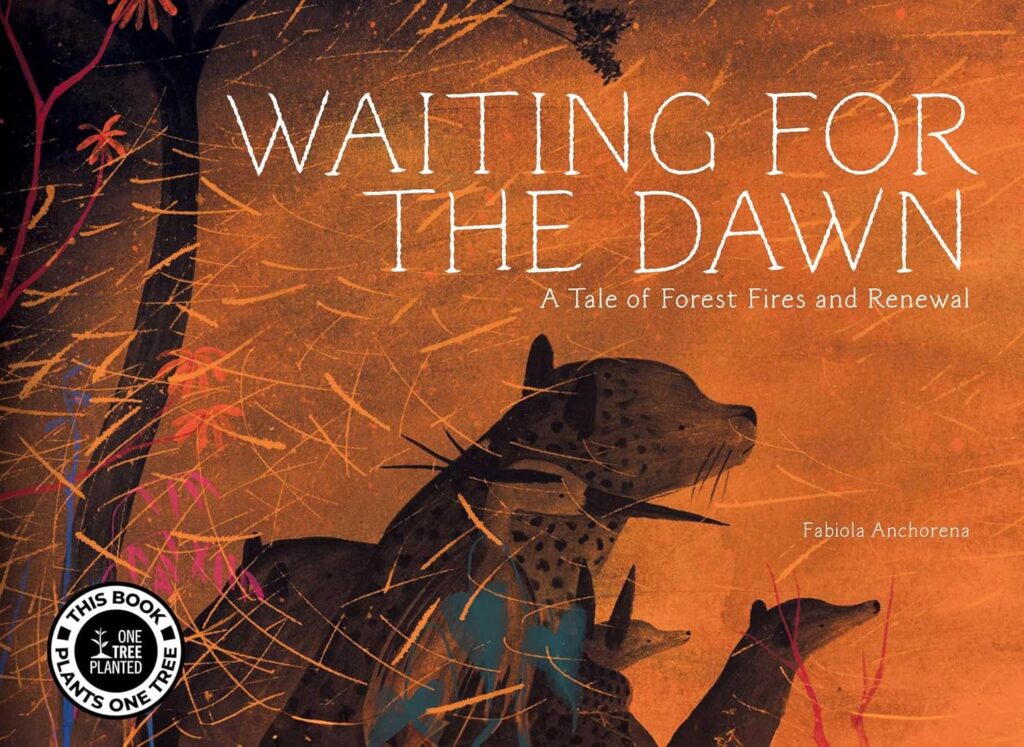
Waiting for the Dawn is from the perspective of the animals. It’s nighttime, or so the animals think, and it’s taking longer than usual for the sun to rise. The leopard, frogs, anteaters, and armadillos also haven’t seen the stars in a long time. The animal community has heard rumors that the sun is hiding deep in the forest, so they make their fly, swim or start to walk in that direction. As they get closer they can feel the heat, but realize that it’s not the sun and are forced to run in the other direction. All of the animals are scared, but keep running until rain starts to fall and the community can spread out amongst the trees and the seemingly endless acres of land in front of them.
The text in Waiting for the Dawn is brief. The preceding paragraph probably has as many words as are in the entire book. Its text is lyrically placed on the pages, but isn’t poetic. There’s no rhyming or AABA or enjambment that you need to be wary of. On some pages, there are simple sentences, some sentences might be continued to the gatefold, others will lead the way with an ellipsis as the animals figure out what’s happening to their home.
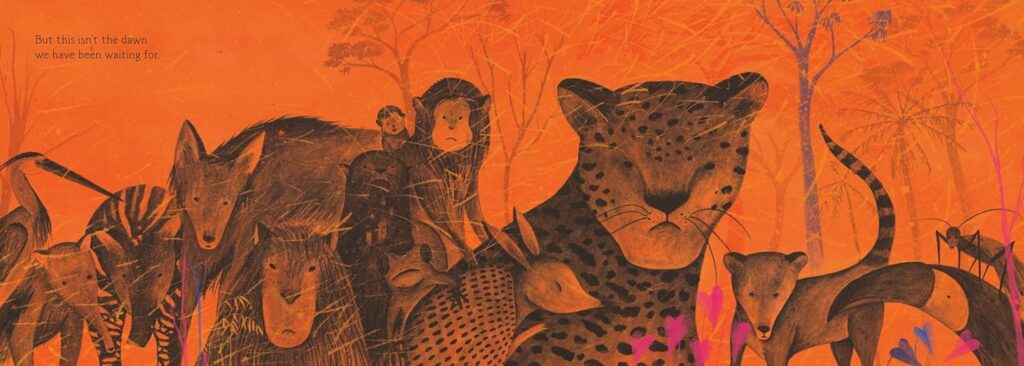
Waiting for the Dawn: A Tale of Forest Fires and Renewal uses succinct text, in combination with its disparate colors, to draw in readers and to hold their attention. It’s the artwork and the colors that will do the bulk of the work. It starts with a leopard, set against a black, two-page spread with some lilies underfoot. The next page has a sloth, lazily hanging out in a tree, with some bats hanging upside down, even higher in the canopy. The trees are a different shade of black, yellow or red, it’s obviously dark, but alludes to the fact that there’s a lot of color in this environment. As the animals join in for their quest through the forest they see it get more orange in the distance, culminating in an illustration that shows them looking directly at the reader. The black animal’s background is orange, with streaks of lighter orange whisking through the sky and a look of confusion and surprise on their faces.
All of them run away from the scene as quickly as they can. The background becomes black again, albeit with streaks of orange, the wind-driven embers that trying to spread its fire seed even further. Eventually, the animals see light, real sunlight preceded by a little bit of rain. The leopard looks up at the sky, as if channeling Andy Dufresne when he finally cleared the sewage pipe. One can almost hear Morgan Feeman narrating Waiting for the Dawn. Of course, this is after you take your time, slowly reading the text and savoring the visuals.
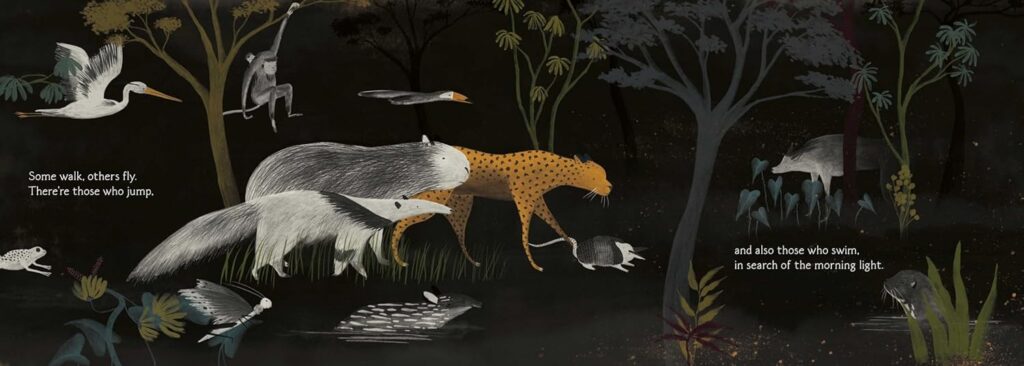
Author and illustrator Fabiola Anchorna has two pages of personal liner notes at the end of Waiting for the Dawn. A resident of Peru, the book was motivated by the forest fires that happened in that region in 2019. She goes on to mention other major forest fires, as well as some of the indigenous Amazonian people who are trying to educate the masses about conservation. There are also a couple of pages written at an elementary school level, that educated young ages about forest fires, their causes, side effects and resources they can dig into for more information.
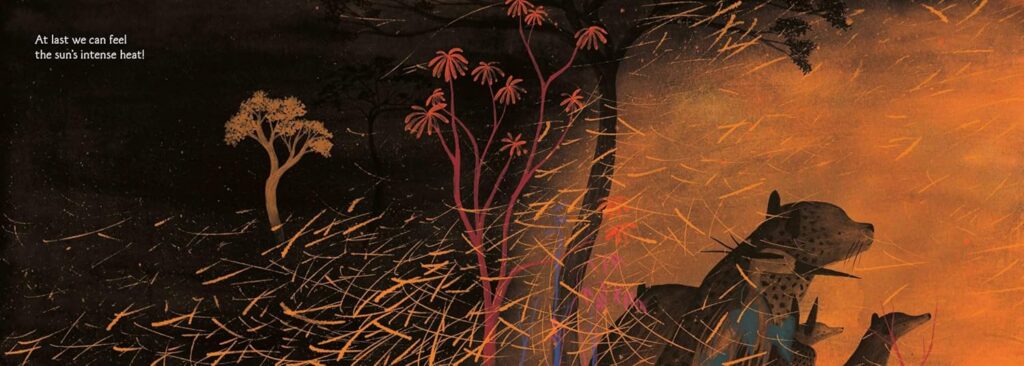
Will young ages want to read Waiting for the Dawn? At their core, kids are curious about fire, and they love animals. Those who have experienced a massive wildfire will certainly be more curious about reading it. The slow, patient and loving story has the silver lining of hope and optimism. A massive wildfire has almost nothing positive, but small, contained fires can be beneficial, that fact is addressed on the final two pages. It’s gorgeous to look at and teaches empathy through the eyes of critters in the forest. Kids will be attracted to the (mainly) duo-chromatic art, but stay for the story and marvel at the rainbow they see at the end of Waiting for the Dawn.
Waiting for the Dawn: A Tale of Forest Fires and Renewal is by Fabiola Anchorena and is available on Tra Publishing.
There are affiliate links in this post.

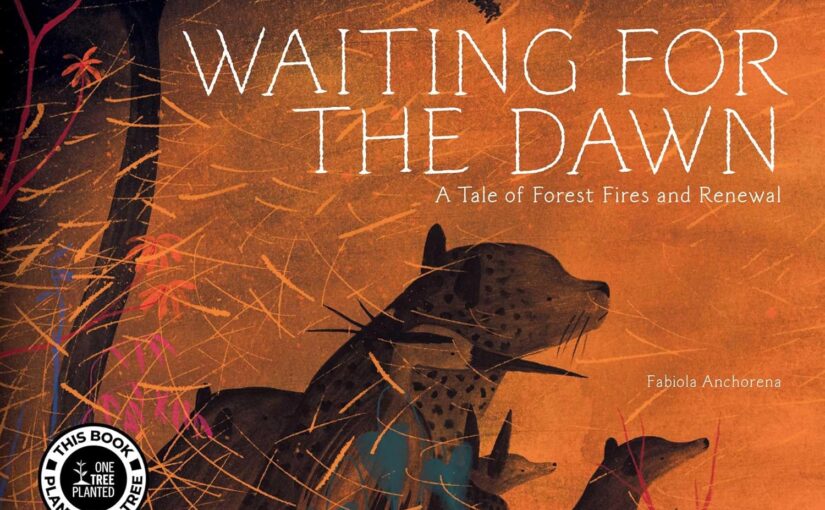



 Facebook
Facebook Twitter
Twitter Flickr
Flickr GooglePlus
GooglePlus Youtube
Youtube